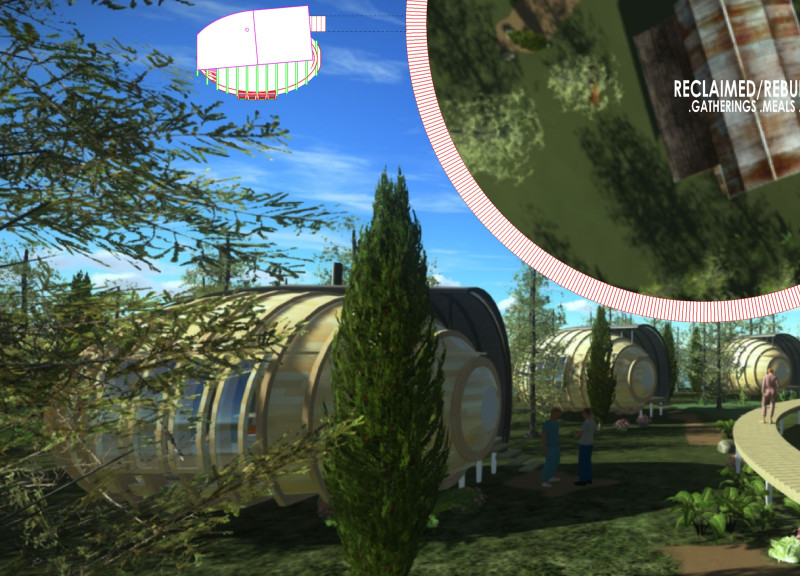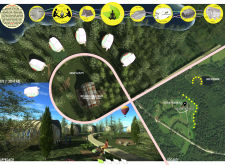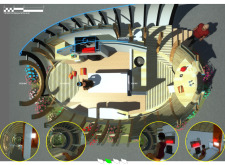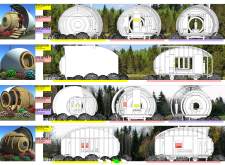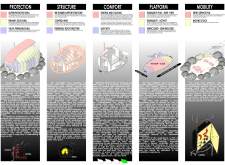5 key facts about this project
Community-Centric Design
At the core of the Tranquility Pods is a circular configuration that encourages socialization while maintaining individual privacy. This layout positions each pod in proximity to a central communal area, allowing residents to gather for activities and meals. Each pod integrates flexible interior layouts, with areas designated for sleeping and meditative practices. This multi-functional approach enhances usability, adapting to diverse community needs. The inclusion of a communal barn further supports the community aspect, providing facilities for social gatherings and fostering interactions among users.
Sustainable Materiality and Environmental Integration
The construction of the Tranquility Pods utilizes a range of materials chosen for their sustainable properties. The outer shell consists of a composite material that offers durability and moisture resistance, while also being visually permeable, allowing natural light to filter into the spaces. The use of timber in structural elements reinforces the project's connection to its natural surroundings, using materials that are both locally sourced and environmentally friendly. Additionally, the design incorporates insulating layers to enhance thermal comfort throughout the year, aligning with modern standards for energy efficiency.
Innovative Mobility Solutions
A defining characteristic of the Tranquility Pods project is the design's emphasis on mobility. Each pod is equipped with an axle system that allows for relocation as community dynamics change. This ability to adapt to the evolving needs of the community distinguishes the project from conventional static designs. The integration of nature is also notable; the landscape surrounding each pod includes native flora, promoting biodiversity and enhancing the sensory experience for inhabitants.
For a comprehensive understanding of the Tranquility Pods, including architectural plans, sections, and design ideas, readers are encouraged to explore the project presentation further to gain deeper insights into its architectural approaches and functional attributes.


